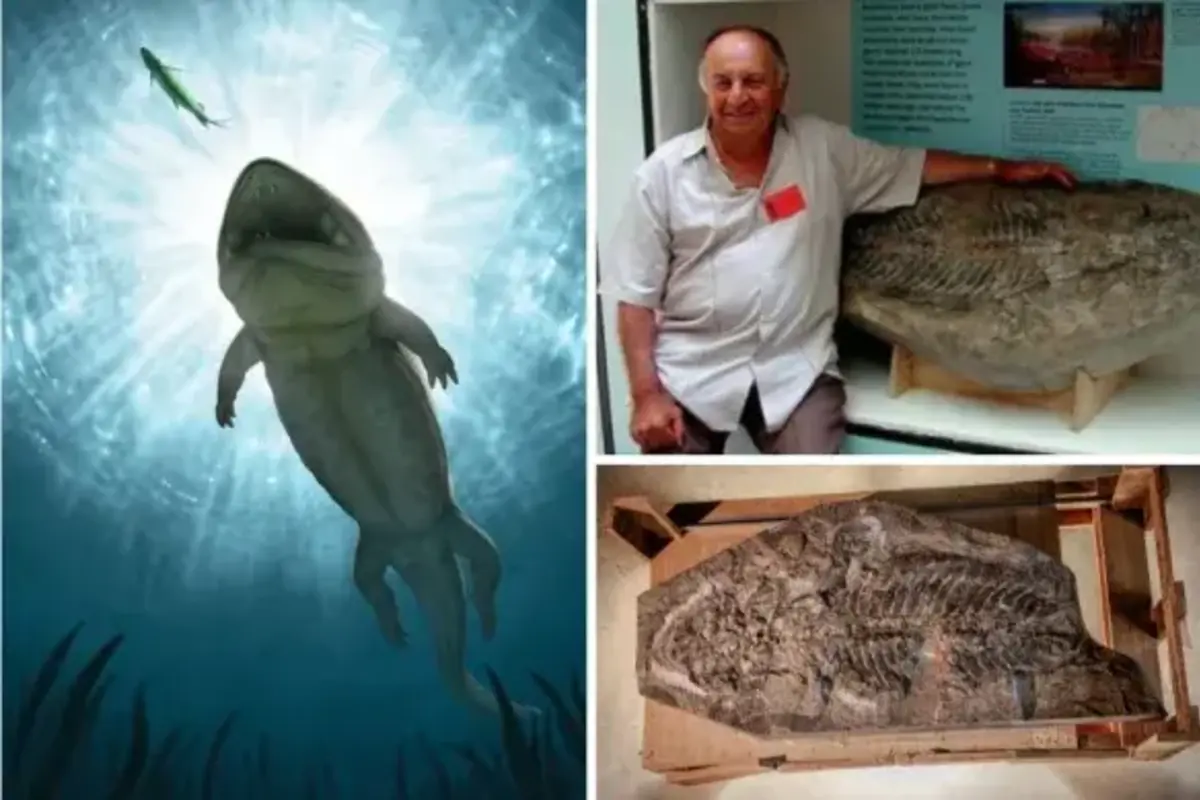
Scientists announced Wednesday that a mysterious fossil discovered by an Australian poultry farmer in the 1990s has now been recognised as a large amphibian with tusks and gnarly teeth.
Mihail Mihailidis discovered the 240 million-year-old fossil while washing down a big sandstone slab that was initially slated to become a retaining wall for his garden.
The near-perfect specimen, which was donated to the Australian Museum in 1997, has perplexed scientists who have worked for nearly 30 years to determine what species of beast it belonged to.
Lachlan Hart, a palaeontologist at the University of New South Wales, described it as a ‘heavyset’ amphibian reaching 1.2 metres (nearly four feet) from snout to tail and resembling a hybrid between a crocodile and a huge salamander.
He believes it hunted freshwater fish with pretty gnarly teeth and a pair of fang-like tusks on the roof of its mouth.
“We don’t often find skeletons with the head and body still attached, and soft tissue preservation is an even rarer occurrence”, Hart added.
The creature was given the scientific name ‘Arenaerpeton supinatus’, which loosely translates to ‘supine sand creeper’ by researchers.
According to Hart, it is derived from an extinct group of animals known as temnospondyls, which roamed the earth before the dinosaurs.
The enormous fossil was X-rayed with the assistance of Australia’s border force, which allowed them to pass it through a massive scanner more often used to inspect freight for contraband.
It was discovered in the mid-1990s in the beach town of Umina Beach in the state of New South Wales, about an hour’s drive north of Sydney.
A flurry of international attention ensued, with Time Magazine speculating that it could amplify the story of human evolution.
“This is one of the most significant fossils discovered in New South Wales in the last 30 years”, Australian Museum palaeontologist Matthew McCurry said.
“It is an important part of Australia’s fossil heritage”, McCurry added.
Also read: After Being Crushed By 25,000 Cheese Wheels, An Italian Man Perishes
To read more such news, download Bharat Express news apps






















